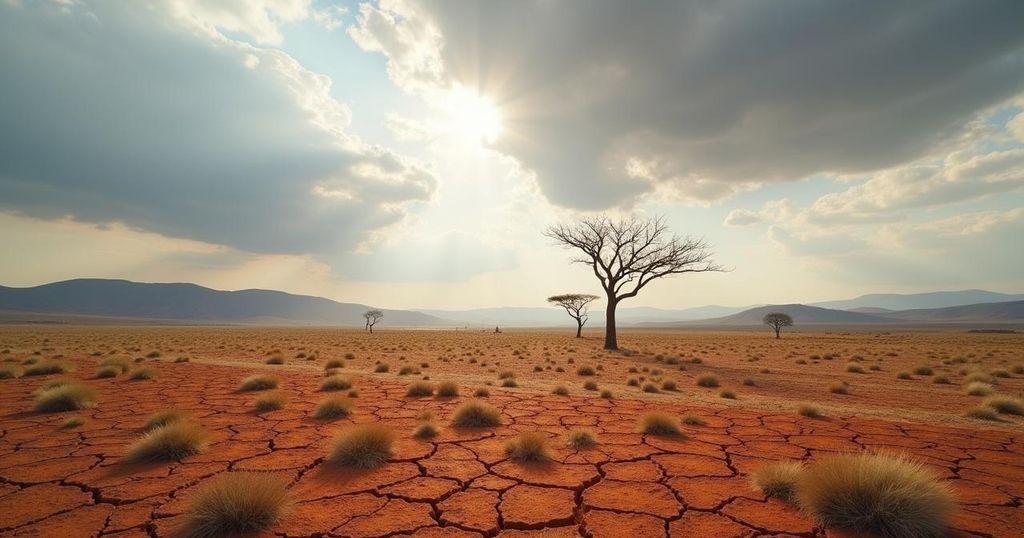Severe Drought in Southern Africa Poses a Humanitarian Crisis
The Southern African region is experiencing its worst drought in a century, affecting 27 million people, with 21 million children reported malnourished. The drought has prompted national disasters in several countries and is expected to intensify until the next harvest in 2024. Major crop losses and livestock deaths have resulted from below-average rainfall, worsened by climate change and the El Niño phenomenon.
The Southern African region is currently facing the worst drought in a century, affecting over 27 million individuals, with 21 million of those being children suffering from malnutrition, according to the World Food Programme (WFP). Countries including Lesotho, Malawi, Namibia, Zambia, and Zimbabwe have declared national disasters as the drought has decimated crops and livestock. Additionally, Angola and Mozambique are experiencing severe repercussions, with the crisis expected to worsen until the next harvest period in March or April of the coming year. The beginning of October marks the start of the lean season in Southern Africa, which traditionally is a time of scarcity; however, this year is particularly dire, as “October in Southern Africa marks the start of the lean season, and each month is expected to be worse than the previous one until harvests next year in March and April.” Tens of millions in the region depend on small-scale, rain-fed agriculture for their sustenance and financial stability, leaving them susceptible to the impacts of the prolonged drought caused by the El Niño phenomenon and exacerbated by climate change. The drought is reported to have severely impacted the agricultural output, wiping out approximately 70% of harvests in Zambia and around 80% in Zimbabwe, as noted by Lola Castro, the WFP’s acting regional director for Southern Africa. The lack of adequate rainfall has also hindered hydropower generation, resulting in significant electricity shortages. In response to dire conditions, authorities in Namibia and Zimbabwe have resorted to culling wildlife, including elephants, to provide meat for their populations as they struggle to meet basic needs.
Southern Africa has been facing significant climatic adversities, with this current drought being classified as the most detrimental in a century. As a region primarily reliant on agriculture, particularly rain-fed systems, the escalation of such a crisis threatens food security on an unprecedented scale. The interplay of climate change and phenomena such as El Niño has intensified the already fragile agricultural landscape, leading to widespread crop failure, livestock losses, and the subsequent humanitarian emergency. The existing vulnerabilities of impoverished communities are further highlighted by their limited capacity to adapt or respond effectively to these climatic challenges, leading to increased incidences of malnutrition and food scarcity.
The compounding effects of a century’s worst drought in Southern Africa highlight the region’s precarious position in the face of climate change and its detrimental impacts on food security. With millions affected and the situation expected to deteriorate further, it is crucial that immediate action is taken to address the humanitarian needs of these vulnerable populations. This dire situation necessitates a concerted international response to provide food assistance and implement sustainable agricultural practices that enhance resilience to climate-induced shocks.
Original Source: www.aljazeera.com




Post Comment